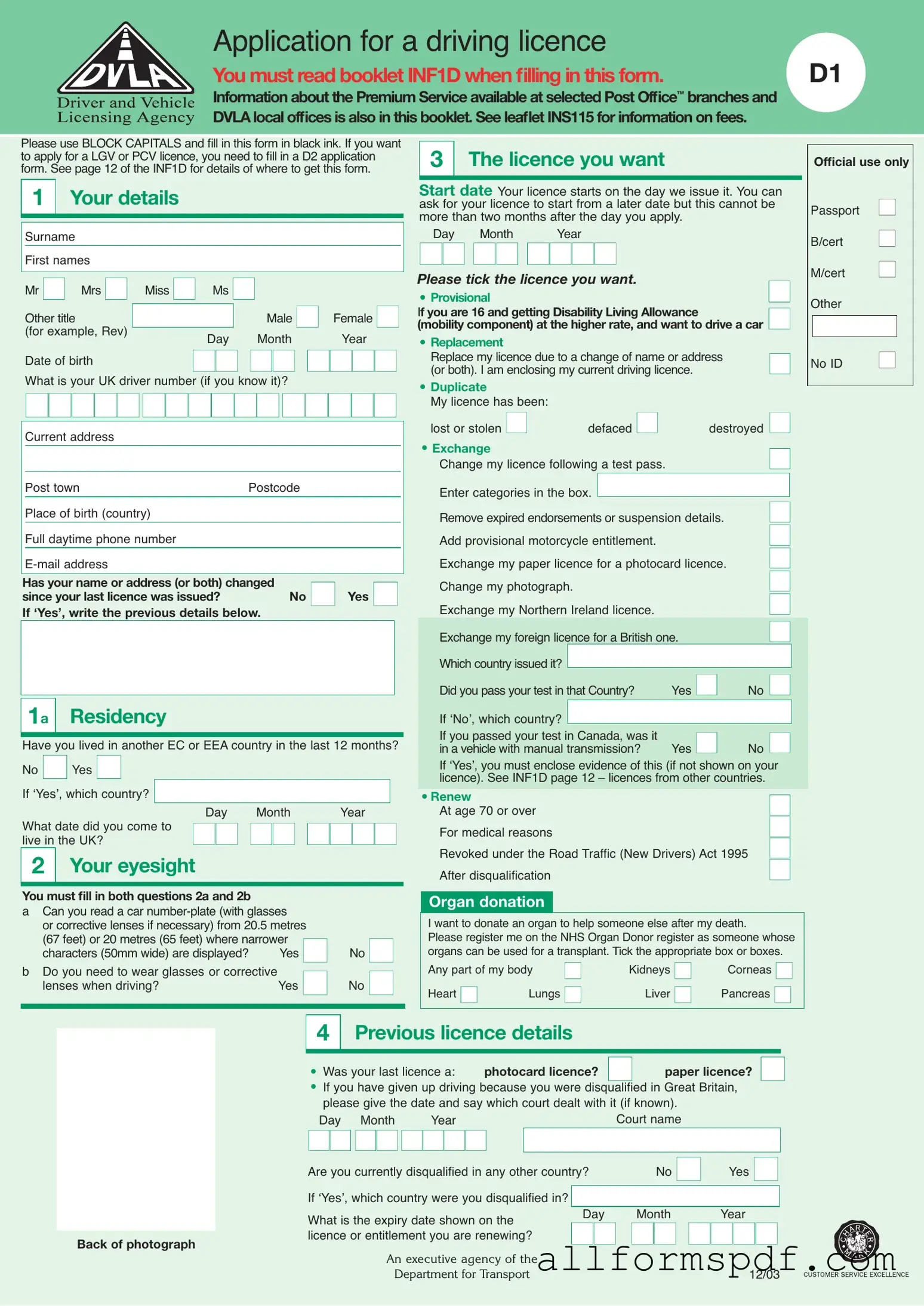Filling out the D1 DVLA form can be straightforward, but many people make common mistakes that can delay their application. One frequent error is failing to use block capitals and black ink. The form specifically requests this format, and not adhering to it can result in the form being returned for corrections.
Another common mistake is neglecting to provide a current address. Applicants often forget to update their address if they have moved recently. This can lead to important correspondence being sent to the wrong location, causing further delays in processing the application.
Many individuals overlook the requirement to confirm their eyesight. Questions 2a and 2b must be answered accurately. Failing to do so, or answering "No" when the correct answer is "Yes," can result in immediate disqualification from obtaining a driving license.
In addition, applicants sometimes forget to include necessary supporting documents. The form requires proof of identity and may ask for a previous driving license. Not including these documents can lead to rejection of the application, requiring the applicant to start the process all over again.
Another error involves the section on medical history. Some people either skip this section entirely or fail to disclose relevant medical conditions. It's crucial to answer these questions honestly, as withholding information can have serious legal consequences.
Many applicants also misunderstand the requirements for signing the photograph. The person signing must know the applicant for at least two years and cannot be a relative or a member of the Post Office staff. Ignoring this rule can invalidate the application.
Additionally, people sometimes forget to tick the boxes that indicate the type of license they are applying for. This oversight can lead to confusion and delays in processing the application.
Finally, not checking the fee details can be a costly mistake. Applicants must ensure they include the correct fee and payment method. Incomplete or incorrect payments can halt the application process.
